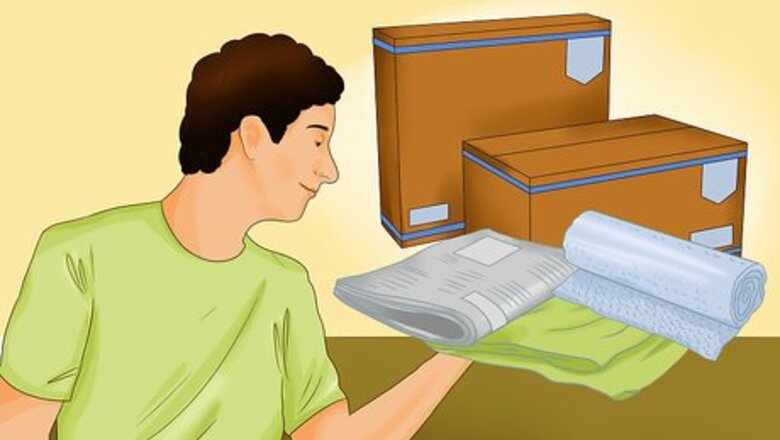
views
X
Research source
There are also ways you can save money on shipping, like by sending your package media mail or making use of special rates.
Sending a Package with the Post Office

Choose a suitable box and pack your item(s). Your box should fit your item(s) well. It shouldn't be too large, but there should be space for padding on all sides of the item(s). For padding, you might use newspaper, packing peanuts, bubble wrap, and so on. If you don't have a box, you might be able to salvage one for free from you workplace. Ask your manager if you can take a used box home. Be sure previous addresses are blacked out. Free Priority shipping boxes can be acquired at your local post office. Simply ask the attendant for some free priority boxes.
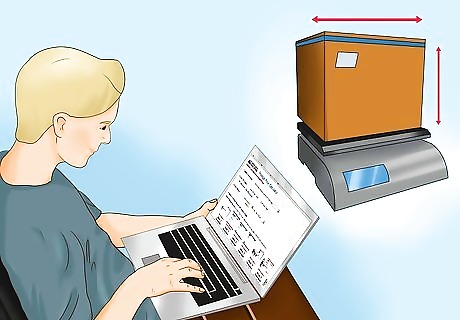
Calculate the shipping cost. If you take your box to the post office, they'll calculate the cost for you. To do this at home, use a tape measure to find the length, width, and height of the box. Then weigh it on a scale. After that: Navigate to the USPS homepage in your web browser. Click on the "Calculate Postage" link and input your package information to determine its cost. Select the services you want from the pages following the postage calculator. Some examples of services include next day shipping or package insurance, which cost extra.
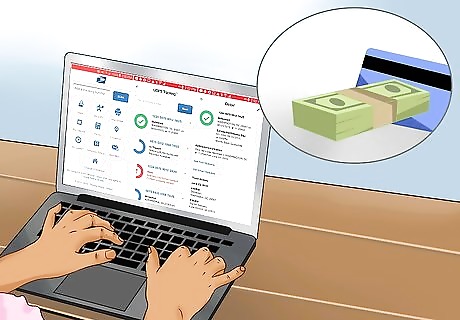
Pay for your shipping. After you've input your package information and selected services, you should reach a screen asking you to confirm the information. Double check the recipient's address and the return address. Then pay for the postage with a credit or debit card.

Attach the shipping label. Once you've paid for shipping, you'll be able to print out your shipping label. Tape this firmly in place on a clearly visible part of the package. When taping, be sure to avoid the bar codes on the label. Tape could affect the bar code reader and delay your package.
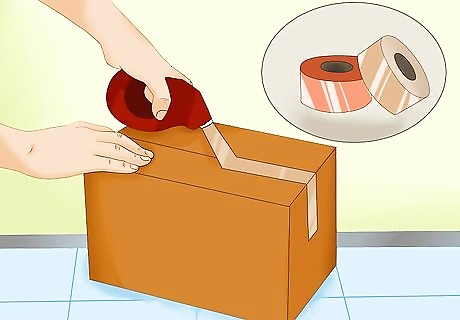
Seal your box. Packing tape is preferred for sealing your box, but other durable tape, like duct tape, will work in a pinch. Tape the flaps of your box closed so it is firmly fastened shut. If the tape feels loose, use another layer (or a few layers) to reinforce it. For recycled boxes being used again, you might want some additional stability. Tape all edges and seams of the box with tape to prevent it from falling apart or spilling open in transit.
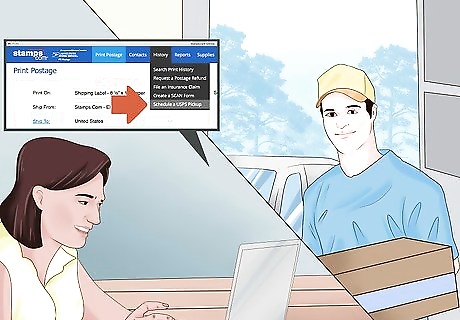
Schedule the pickup for your package. Go to the post office home page. You should find a link that says something similar to, "Schedule a Pickup." Select this, and follow the directions to choose a time for your package to be picked up. Although the USPS offers free pickup, many private shipping providers do not. Be wary of these additional expenses, as they can significantly increase the shipping cost. Generally, you will choose a location for pickup when scheduling. Some examples of locations include in/at your mailbox, or at your front/back door. You can also typically leave instructions to knock on the door/ring the bell, and so on.
Sending a Package with a Private Shipping Company
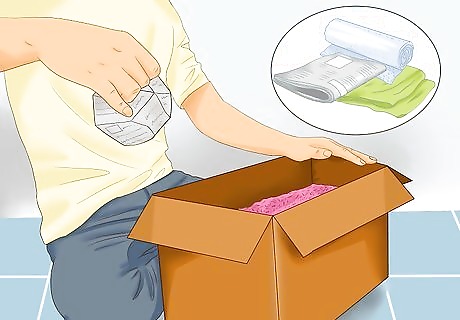
Prepare your box to ship. Do this in the same way you would normally ship a box from home with the post office. Insert your item(s) in a suitable box and pad the items well with things like newspaper, packing peanuts, and bubble wrap. Then take the measurements of your box. Depending on the company, the information you have to provide for your package may vary. Generally, length, width, height, and weight are necessary to ship a package.
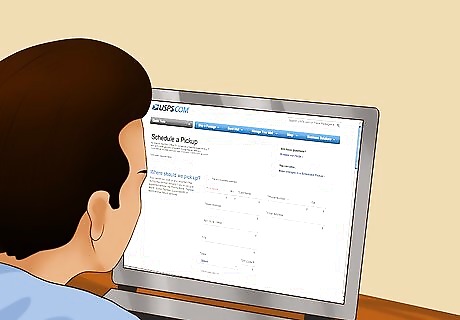
Input your information and schedule a pickup. Go to the homepage of the company you are planning to use to ship your package. Select the "Schedule a Pickup" option and input the necessary information to calculate postage and shipping details. Then: Double check the shipping and return addresses. Verify the label policy. You may need to use a special label provided by the company, which you may have to order by mail or pick up from a brick and mortar location, or you may be able to pay with a card and print one. Choose a time for pickup.

Ship the package. Seal your package with tape. Then tape or stick the label in place where it's clearly visible. Do not cover the bar codes of the label with tape. If the company you are using requires a special label, you may have to fill out shipping documents before the driver can take the package. Generally, the driver brings these when picking up the package. Some companies may require you to be present at package pickup. Others may require you to select a pickup location, like your mailbox, at your front/back door, and so on.
Saving Money on Shipping
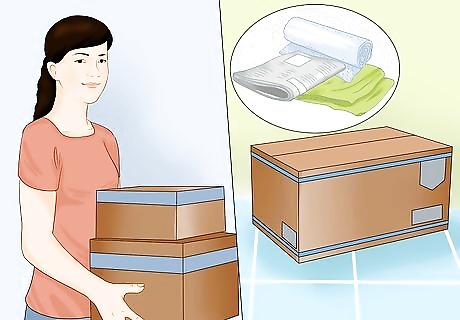
Economize on shipping materials. Packing peanuts, bubble wrap, and even boxes can be quite expensive. To save money on these expenses, you can use or reuse items around your house to safely pack your parcel. For example, you might: Use crumpled newspaper, old blankets, clean rags, or fabric stuffing to keep your packaged items from getting damaged en route. Salvage boxes from your place of employment, from local businesses (like grocery stores and big box stores), and so on. Black out previous addresses on these with a permanent marker.

Shop around with shipping providers. Your home country's national postal service is most likely the least expensive option. However, for regular shipping or high volume shipping, you can often negotiate a better rate than the ones offered by competitors. If one company has given you a better quote for the cost, mention this to competitors. They might offer to beat that cost.

Inquire about special rates. Private shipping companies might have special rates for those who are shipping from home for the first time. There might also be special rates offered during the slow season to encourage more shipping. When shopping around, be sure to ask something like: "I'm planning on shipping a medium sized, 20 pound (9 kg) package from my home. Are there any special rates being offered right now for that kind of shipping?"

Ship your package media mail, if possible. Media mail is a more affordable way of shipping packages under 70 lbs (32 kg). The downside to media mail is that it usually takes much longer than regular shipping, so it isn't preferred for time sensitive packages. Items that qualify for media mail include: Print material at least 8 pages in length (including sheet music, play scripts, manuscripts, guides, periodicals, and so on). Sound and video recordings (like CDs and DVDs). Computer material that is readable. Film (16 mm or narrower) Educational materials (like test materials and accessories, reference charts, etc.)




















Comments
0 comment